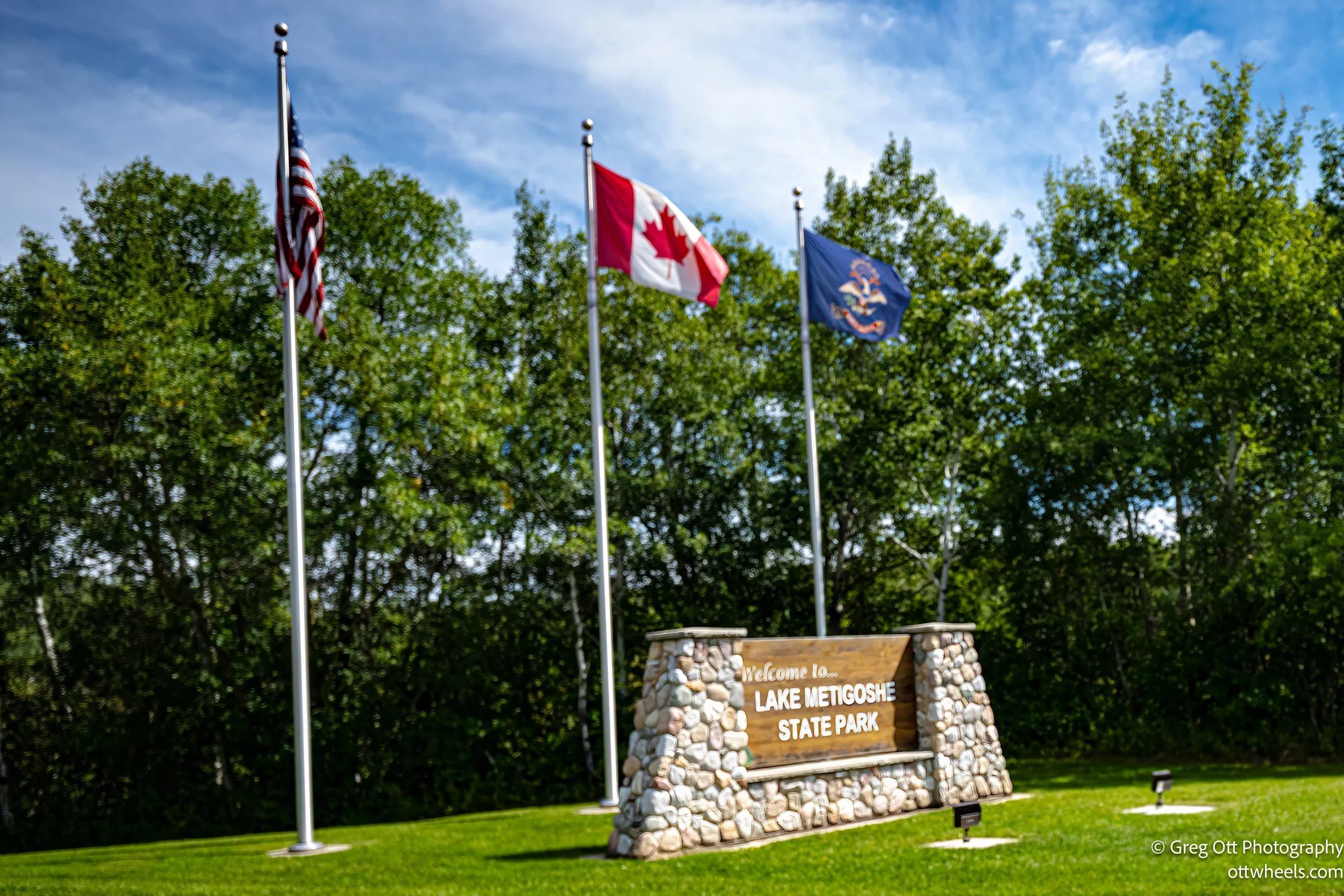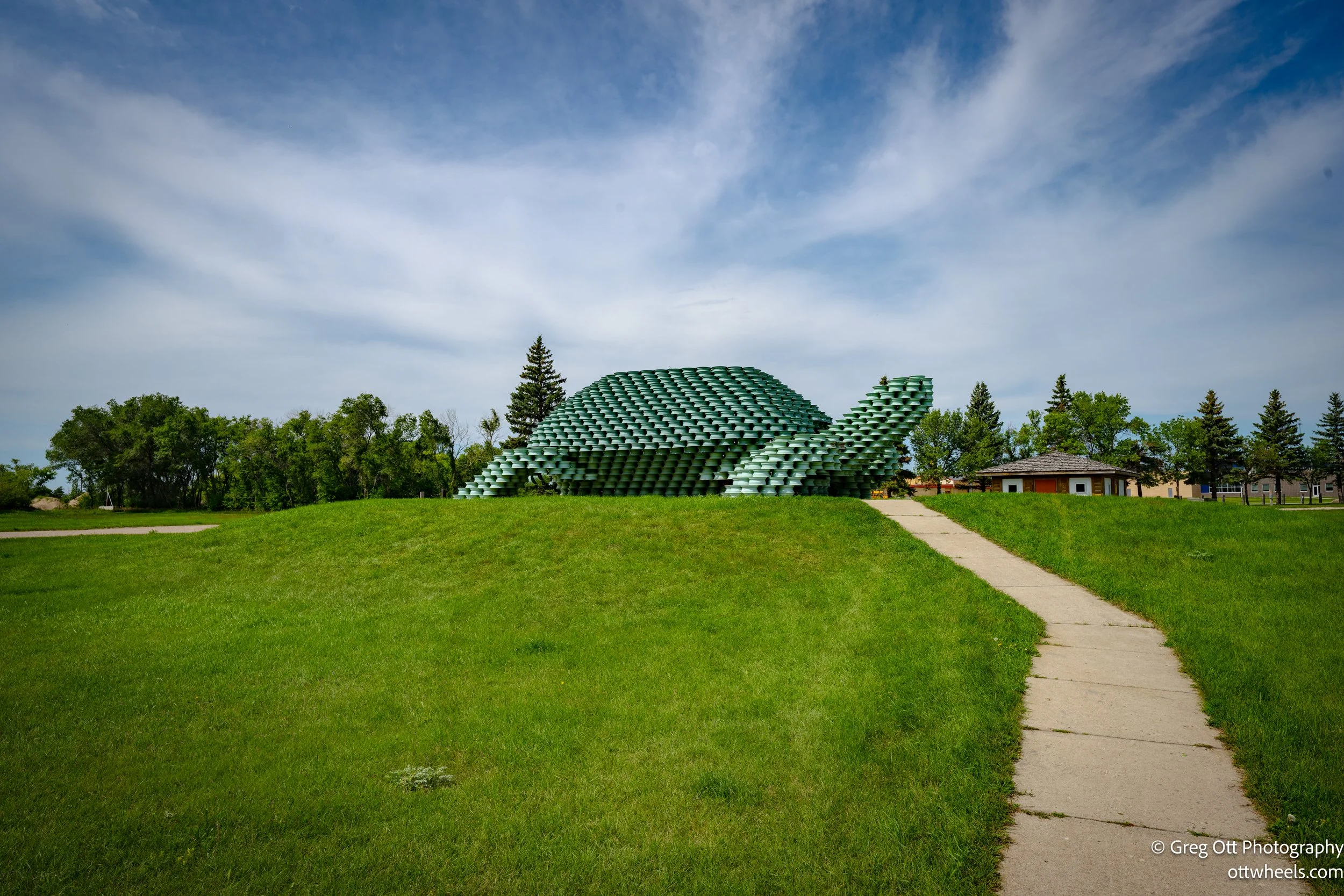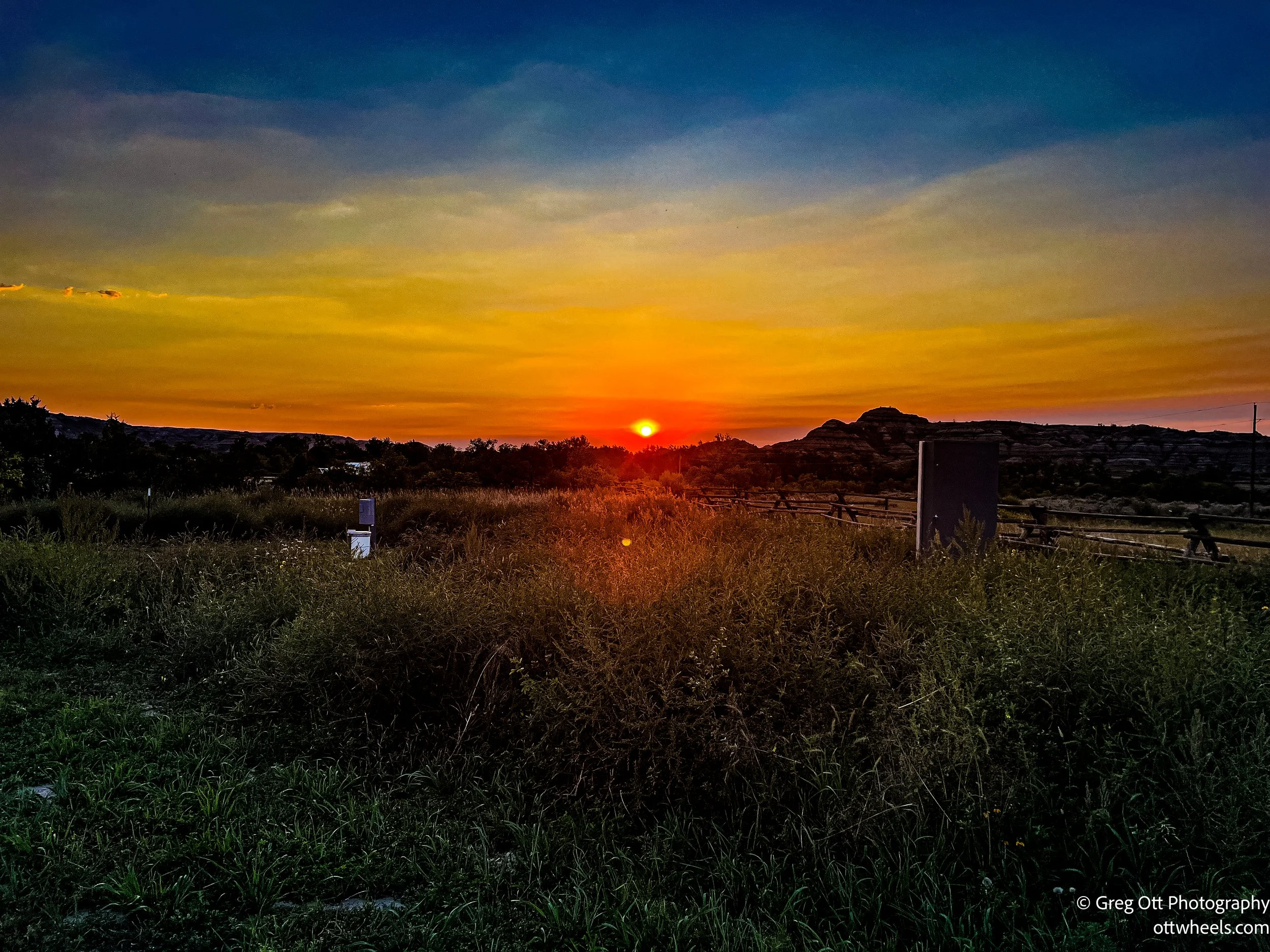Drive to Walford City
I left Lake Metigoshe State Park around 10:30. Just as I reached the exit, a group of cyclists rode across the road in front of me. Turning onto the highway, I immediately noticed a newly paved bike path stretching off into the distance. My first thought was, why hadn’t the ranger mentioned this trail? It looked like it went on for miles, maybe even connecting to a nearby town. I realized I should have checked one of my apps for bike trails yesterday.
The drive today was longer than I usually care to do, but I was set on reaching the north side of Theodore Roosevelt National Park near Watford City.
My first stop was a little out of the way, but several people had told me I should go see the giant turtle in Dunseith. Known as the W’eel Turtle, it was built in 1982 by local artist Harry Skull out of more than 2,000 discarded car wheel rims. At 18 feet tall and 40 feet long, it holds the title of the world’s largest turtle made of wheels. Sitting just outside of town near the International Peace Garden, it’s one of those quirky roadside landmarks you can’t pass up — equal parts local pride and offbeat Americana.
Crossing North Dakota, the landscape tells the story of the state’s economy: endless rows of corn, soybeans, and sunflowers on one side, and oil rigs punching into the prairie on the other. Farming has always been the steady backbone here — soybeans and corn alone can bring in five to six billion dollars in a good year, with sunflowers adding their share. But in the west, oil dwarfs farming. Since the Bakken boom, oil and gas have hit thirty billion in value some years. Out east, farming still rules; out west, it’s often the oil checks that pay the bills, while the fields provide the scenery.
Watford City was just a pass-through for me, but it left an impression. For a town of about 6,000, it looked far more built up than you’d expect. That’s the oil boom at work. Restaurants and shops lined the main street, and just outside of town I spotted a high school (checkout the images) that looked brand new. Sure enough, it opened in 2016 at a cost of over $50 million, largely funded by oil and gas tax revenue. Next to it sat a pristine baseball field, the kind you’d expect in a city much bigger than this. Around the edges of town, rows of fresh condo-style apartments and townhomes stood — likely housing the oilfield workers who poured in when McKenzie County became North Dakota’s top oil producer. Even in a quick drive-through, you could see how oil reshaped the skyline, though the place still held onto its small-town feel as the gateway to the rugged North Unit of Theodore Roosevelt National Park.
By evening I pulled into the CCC Campground on the prairie. It’s called primitive camping, but there were electrical hookups at every site and even brand-new open pit toilets — surprisingly clean, no flies, and plenty of ventilation. I arrived around 6 p.m., scanned the QR code to register, and immediately ran into issues booking two nights. After a couple of failed attempts, I walked over to the camp host’s trailer. A dog barked, the host stepped out, and with a smile he said, “Hi, welcome. What can I do for you?” He helped me through the first hurdle and explained that some sites were reserved for web users, though we both agreed the system should allow up to 14 days. He told me not to worry — the campground wasn’t going to fill, and I could park anywhere I liked. We chatted for about 45 minutes before I finally headed back to my site.
I hadn’t eaten much all day, so I cooked up three massive tortillas stuffed with refried beans, chicken, onions, peppers, salsa, and sour cream. With the side door open, I watched the sunset spill across the prairie as I ate dinner — a perfect end to a long drive.







